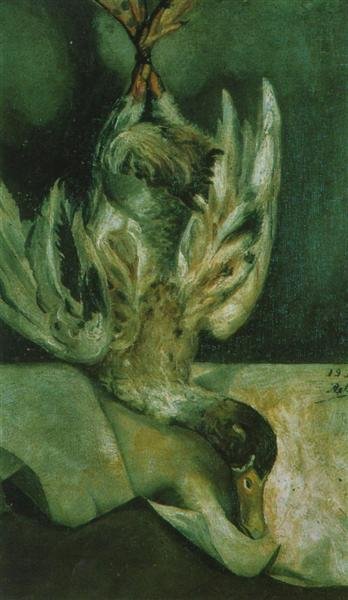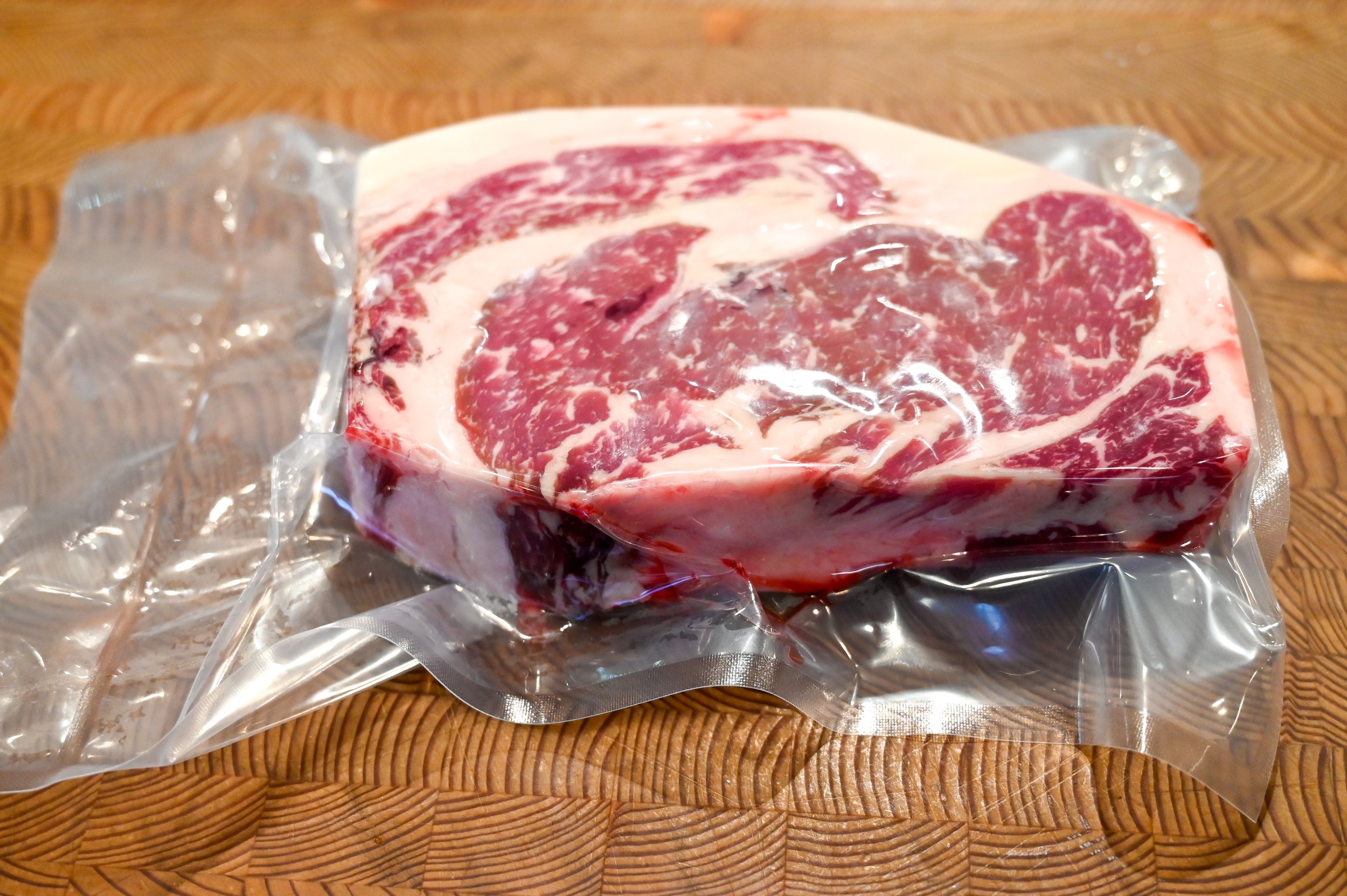Dry Aged Beef
Previously I described my experience dry aging duck which required hanging a crown of duck in our refrigerator for 10 days. The result was some of the best tasting duck we have ever eaten. Unfortunately, my wife was not keen on repeating, at least not in our fridge; if I am to be truthful, the duck gave off a certain “je ne sais quois” i.e. funkiness, which was evident every-time the door was opened and it took up valuable space. In addition, normal fridges like ours have limited air circulation, and as the door was opened repeatedly to access other food items, it wasn’t possible to maintain optimal or stable temperature and humidity. It was clear that if I was going to do any more dry ageing (DA), I needed a dedicated dry ageing fridge.
There are a number of websites with instructions on modifying inexpensive beverage fridges for DA and I thought this would make a good COVID project. However, as my birthday was approaching, I decided to instead gift myself a purpose built unit, the PRO 40 from Steakager which I picked up at the Danby Factory Outlet.
Having successfully DA duck, I decided for my next attempt to DA beef. But before describing this new project, a little background on DA much of which I learnt from J. Kenji Lóez-Alt’s excellent article How to Dry Age Beef at Serious Eats and from members of the The Official Steakager Owner’s Facebook group.
Aging meat has been practised for hundreds of years. Indeed you might have seen old paintings showing ducks and other wild game hanging, e.g. Hare, Partirdges, and other Birds in a Niche (Jan Weenix - circa 1675) or The Slaughtered Ox (Rembrandt - 1655). A more recent example is Duck painted in 1918 by Salvador Dali when he was just 14!
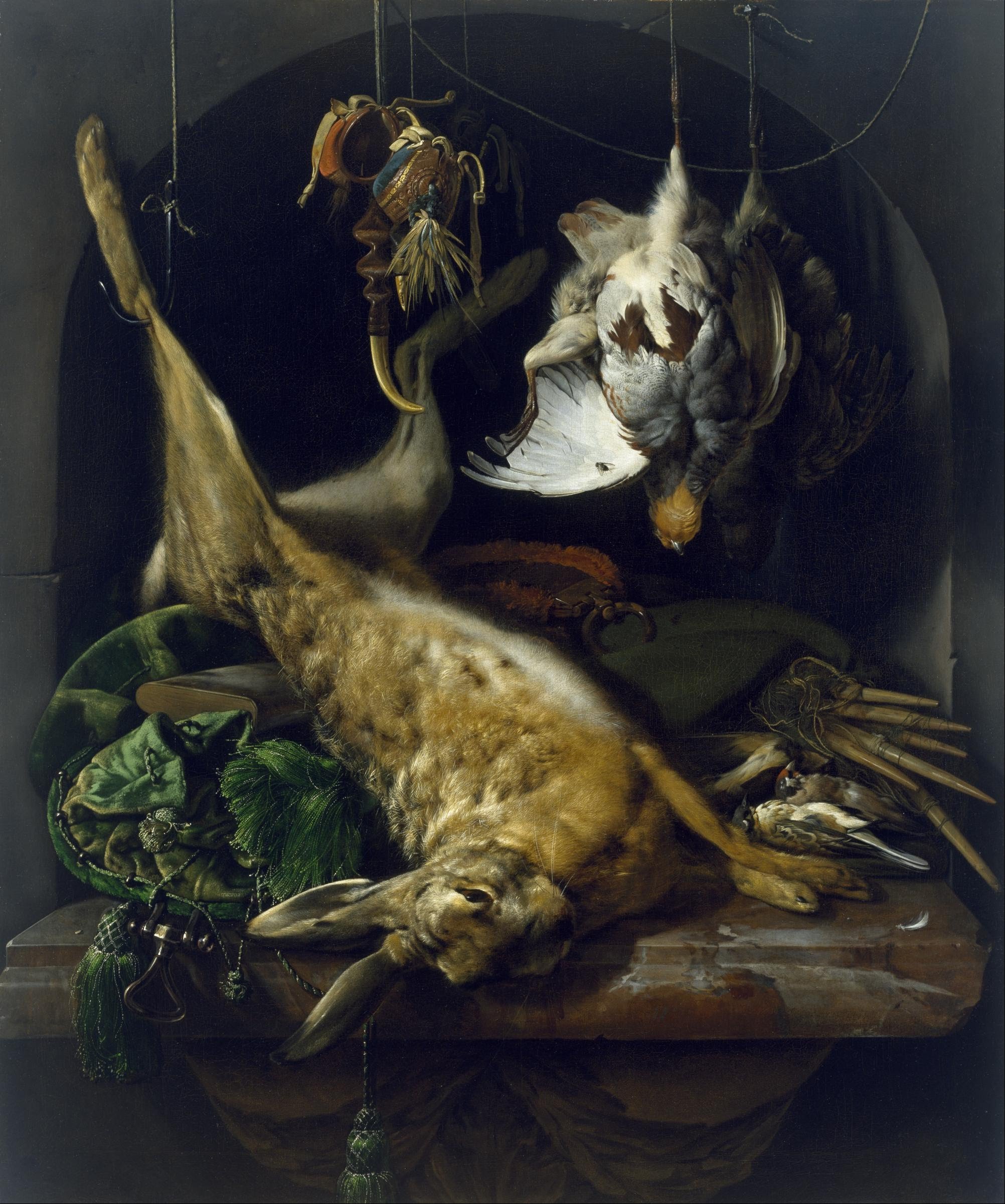

Back then, as you can see from the paintings, DA consisted of simply “hanging” meat from a hook. Unfortunately, as there was no ability to control temperature or humidity, bacterial contamination was a very real risk. With the development of refrigeration, this risk is minimized.
But even with refrigeration, it wasn’t until the 1950’s that aging beef became popular. That’s when the meat and restaurant industry recognized they could market and charge extra for it as aging promoted both tenderization and flavour changes. (Interestingly, that is also about the time Cryovac plastic bags were developed which allowed for wet ageing which is now the dominant aging method used. But more about that in an upcoming post!) Tenderization comes about from enzymes naturally present in meat which break down tough muscle and connective tissues through the process of proteolysis. Flavour change is more complex, but in part results from oxidation of fats, enzymatic activity, and depending on who you believe, microbial activity.
While there isn’t much debate about the dangers of bacterial growth on ageing meat, there is less agreement on the value of mold, in particular species of Thamnidium, Rhizopus and Mucor. In an excellent article published by Meat & Livestock Australia they note:
Dashdorj et al. (2016) promotes the growth of “beneficial mold”, specifically Thamnidium, on DA meat, because its extracellular enzymes “bring about tenderness and taste”. By contrast, Jensen (1944) states: “There is a sharp difference of opinion on the question whether or not microorganisms aid in producing the organoleptic qualities demanded of aged beef or whether autolysis produces these effects.”
…recent studies by researchers at University of Melbourne indicate that enhanced flavour and texture of DA meat is not dependent on mould growth (Robyn Warner personal communication).
What ever it is that promotes the changes in flavour, most tasters report DA beef results in deeply beefy, nutty, and almost cheese-like aromas. “Funkiness” is also an oft used descriptor especially for meat DA greater than 28 days.
It begs the question then, if DA beef enhances tenderness and flavour, why isn’t all meat DA? Well firstly, one doesn’t have to age meat. Indeed on a trip to Argentina, I was surprised that despite being known for its beef, I found it tough and chewy. I suspect in part that was because their beef is consumed within days of slaughter with little ageing. (It could also be due to the beef being totally grass fed; with out finishing on grain beef may lack marbling which is one of the keys to tenderness and juiciness.)
As to why not DA all beef, in short: time, cost, and effort. It takes at least 21 days to reap any benefits, and as previously noted, 28 days or more for the flavour changes. The cost relates to the specialized facilities / fridges required, and more importantly the water loss with resultant weight loss that comes from exposing the meat for several weeks to air. Further loss of yield comes from having to trim away the meat’s outer layer that dries out.
One typically hears that up to 30% of the initial weight is lost with DA. This is misleading as after the first 2-3 weeks of ageing, the dried outer surface forms a barrier greatly reducing further water loss. And if one chooses meat with a good covering of fat and bone, that too greatly reduces water loss to say nothing of the enhanced flavour both provide. (Our ribeye only lost 15% of its starting weight). Much of the trimmings would have been removed regardless of how the meat was aged.
To optimize both yield and flavour then, its best to start with a large cut of meat, ideally with bone in and a good outer layer of fat. A large cut minimizes surface area relative to volume so less meat is exposed to drying out. The fat and bone add flavour and adds additional protection to the underlying meat. Better to trim away dried out fat that would have been trimmed anyway, than to lose meat.
The bigger the piece the better, but for practical purposes, a sub-primal cut is ideal for home DA. After slaughter, meat is first divided into primal cuts and then into smaller sub-primal cuts. These sub-primal cuts are what your butcher receives (usually vacuum packed in plastic, i.e. wet aged) which they then portion into individual cuts e.g. a striploin.
But where to get such a cut? Enter my biking friend Anton who in his previous life, was a high end chef and a connoisseur of DA beef. I asked him and another bike buddy if they wanted to share the cost of a sub-primal which I would age in my new fridge. Anton consulted with Peter Sanagan, owner of Sanagan's Meat Locker, a boutique butcher shop in Toronto's Kensington Market that sources and sells meat from small Ontario farms.
Sanagan’s Meat Locker in Kensington Market, Toronto
We decided on a bone in rib-eye, as it is considered by many to be the most flavoursome cut of beef. It is extremely tender as it comes from the lightly worked upper rib cage area. Comprised of the animal’s sixth to twelfth ribs, it has a good “fat cap” on one side and bone on the other adding flavour and protection to the underlying meat. (A steer has a total of 13 ribs on each side. The first 5 comprise the chuck subprimal, i.e. the animal’s shoulder, and yields tougher cuts of meat because the shoulder does a lot of work supporting the animals weight. Rib 13 is generally left with the hindquarter.)
Ribeye is not only tender, it has a lot of marbling which refers to the small streaks of fat found within the muscle, i.e. intramuscular fat, giving it the appearance of marble. This fat provides juiciness and flavour. In contrast, meat with little marbling may be dry and flavourless. That isn’t to say that excessive amounts of marbling will necessarily increase juiciness and flavour.
In addition to intramuscular fat, there is intermuscular and subcutaneous fat. Intermuscular fat, also known as seam fat, is usually a thin layer found in between and separating muscles. Subcutaneous fat, also known as back fat or external fat, is located on the outside of the muscle, just under the skin. This external fat is to varying degrees trimmed from retail cuts. (A good example of this external fat is the rim of fat found along the outside edge of a New York strip steak.)
The three different types of fat and where they are found in a steak
TOO MUCH INFORMATION: For the anatomically inclined, the muscles comprising a ribeye are the M. longissimus dorsi, M. spinalis dorsi, M. semispinalis capitis (Complexus) and M. iliocostalis connected to ribs 6-12. The two largest and most important muscles are the longisissimus and the spinalis.
The longissimus dorsi (longissimus - Latin for 'the longest one' and dorsi - Latin for 'the back') is a long tender muscle that runs the length of the cow's back from the shoulder to pelvis. As noted it doesn't get much exercise so it is tender and typically has a good amount of intramuscular fat, although not as much as the spinalis. It makes up the largest component of the ribeye and is often referred to as the “eye of the ribeye” (The longissimus is also the primary muscle in strip steaks but further down the animals back, just behind the rib cage).
The spinalis dorsi is the strip of muscle found at the top of the steak. Often referred to as the "ribeye cap", it is considered by many to be the most delicious and tender part of the ribeye. As it is biggest at the front of the subprimal and gets smaller towards the back end, I prefer for my ribeye steaks to be from the front of the subprimal.
The complexus is a small muscle at the front of the ribeye and it along with the iliocostalis may or may not be trimmed off by the butcher. This is nicely illustrated at Rangers Valley, an Australian beef producer. This video at the half way mark also illustrates the four muscle groups.
One of Sanagan’s suppliers is Mike and Chris of Penokean Hills. To ensure their meat was healthy, ethically raised, well marbled, and tender, they starting breeding their own cattle. As they grew, they contracted out their beef program to neighbouring farmers. In addition, they re-opened the local abattoir that previously serviced the local community. This controlled, closed network allows them to produce great beef and fosters opportunities for the community. It was from them that Peter Sanagan sourced our bone in ribeye subprimal.
11.61kg (25.59lb) bone in rib-eye sub-primal. Notice it came wrapped in cheese cloth and not in a plastic bag as would be used for wet ageing.
The full ribeye subprimal is comprised of ribs 6-12, and includes the spinalis dorsi muscle (said by some to be the most delicous part) and the longissimus,
We decided on aging it for 50 days at which point we expected the intense flavour changes associated with dry age beef. For context, it is rare to find dry age steak at one’s butcher or restaurant aged more than 28 days.
Day 1; only 49 more to go!
At long last, a beautiful 50 day DA ribeye subprimal ready for trimming!

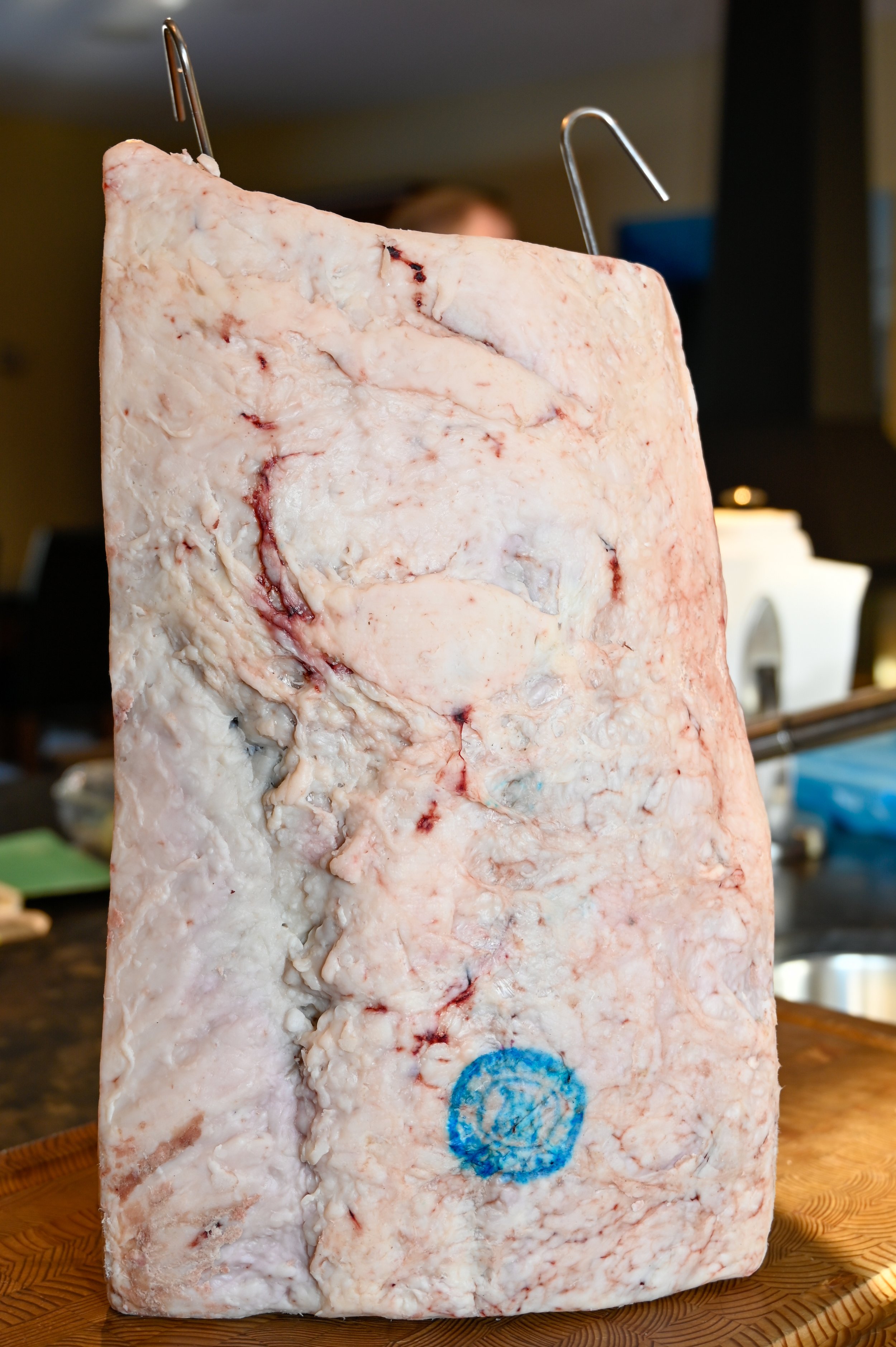

After 50 days, our ribeye had only lost 15% of its weight in water because as noted previously, during DA a crust or bark forms on the outside of the beef which forms a barrier slowing down additional water loss. The formal name for this dried out layer is the pellicle and has to be trimmed away at the end of the ageing process. These trimmings are not a complete loss however, as they can be used in such things as burgers and stock which I will describe in a future post.
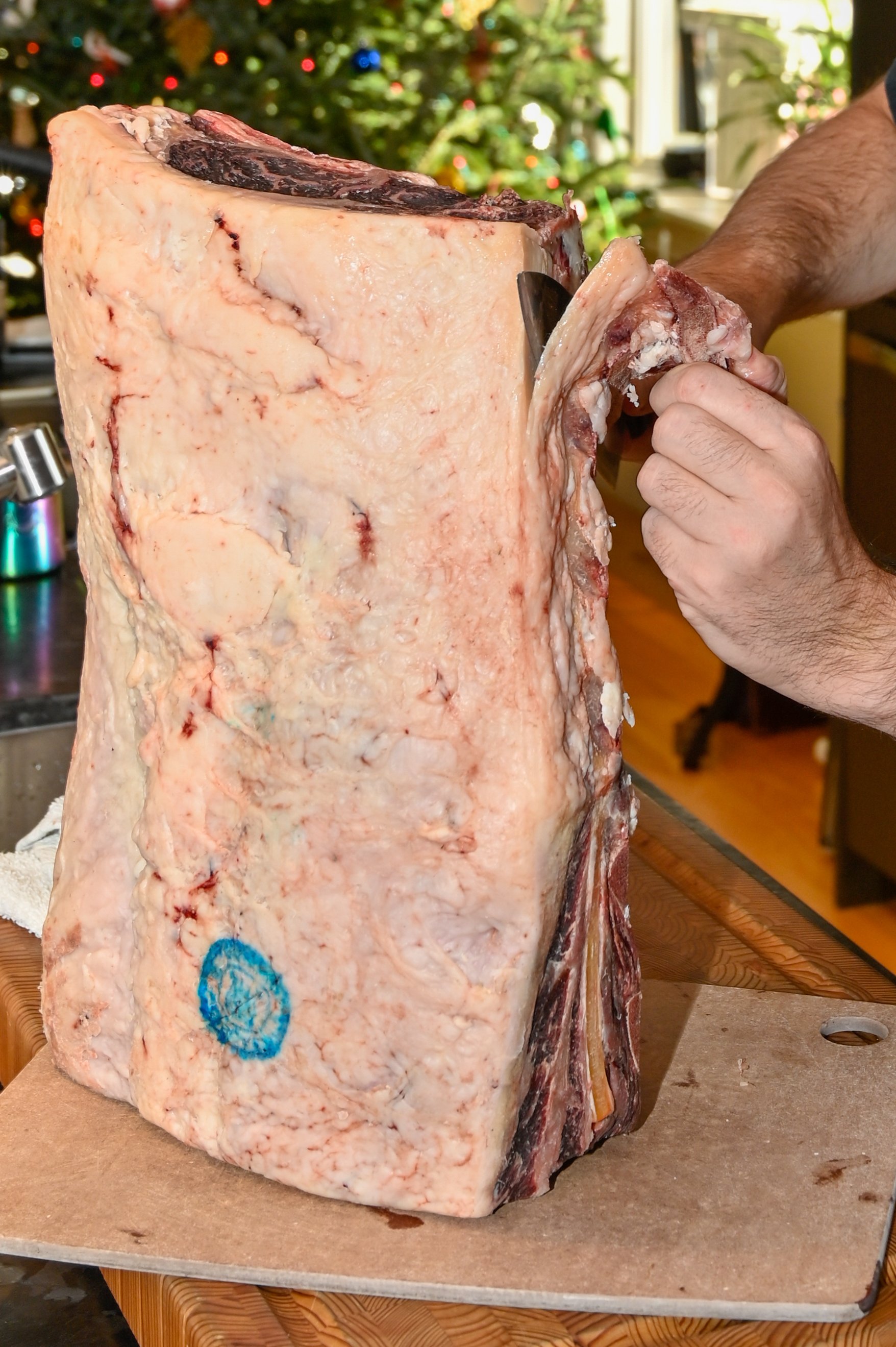
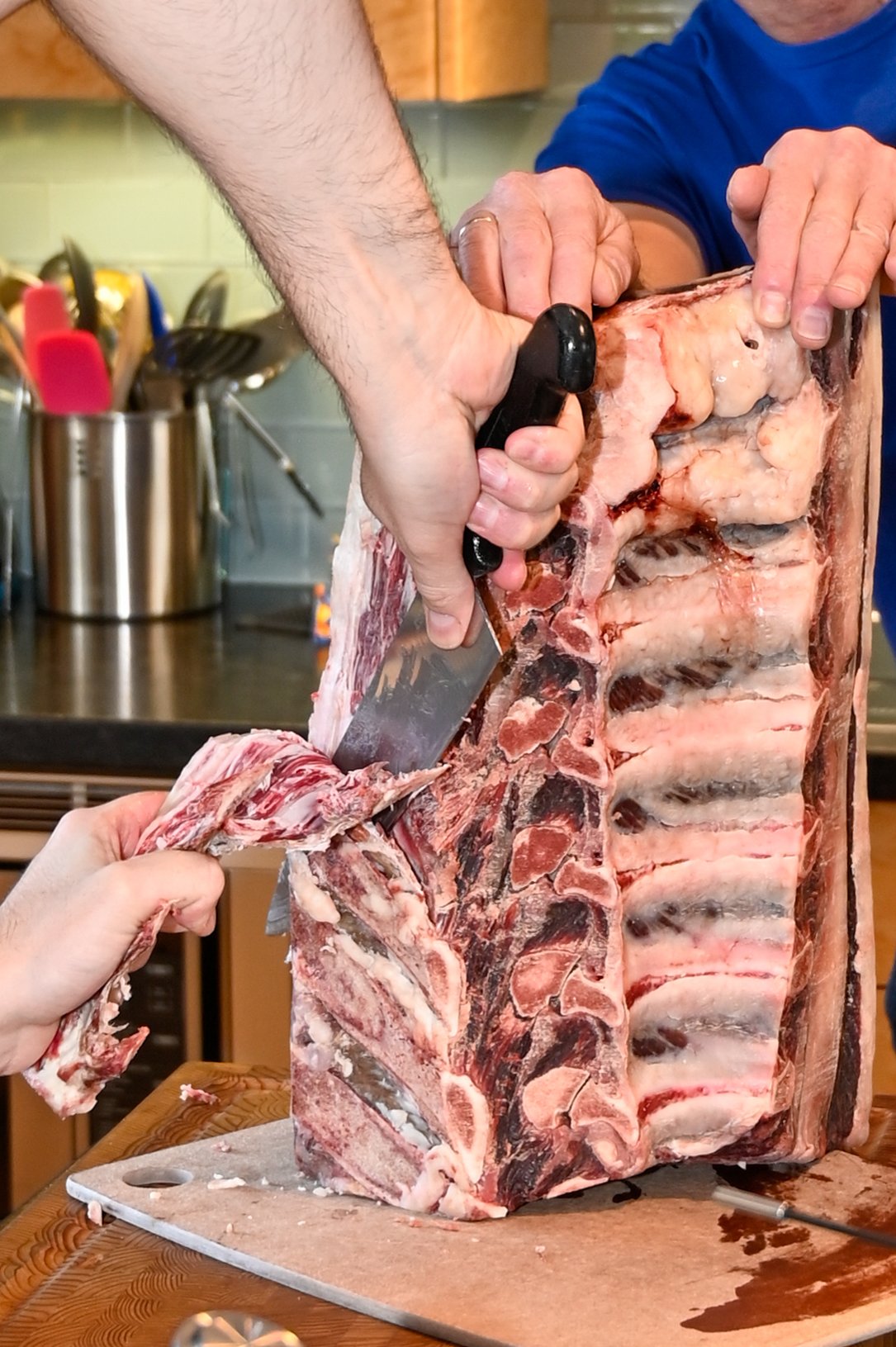
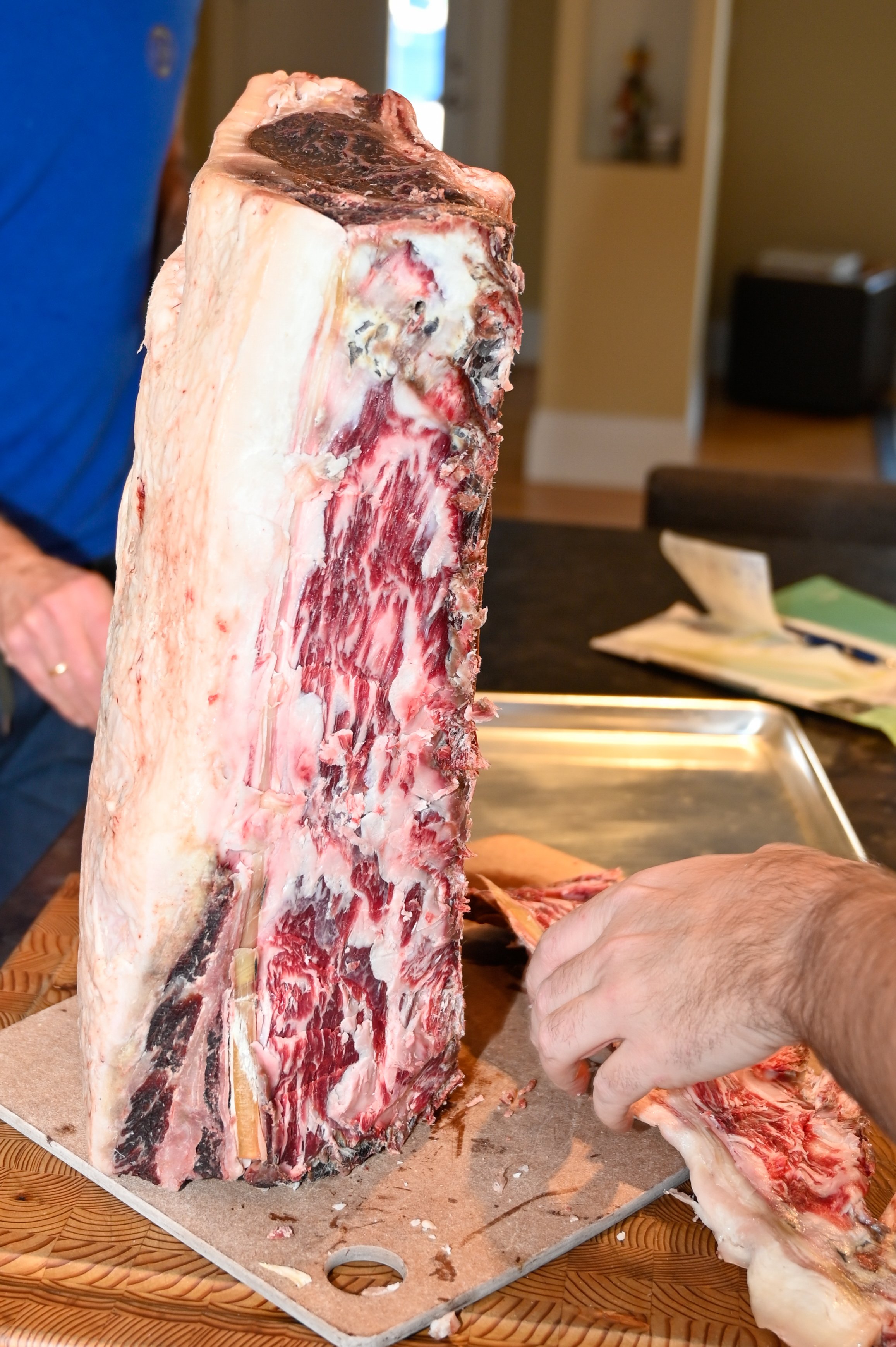
Once the pellicle was removed, we removed the bone and cut the ribeye into thick individual steaks. Those that weren’t to be eaten right away were vacuum packed and frozen for another day.
All that was left to do was to cook one of those steaks! My friends went traditional and cooked theirs on their Big Green Egg charcoal grills while I chose to cook mine sous vide and finish off by searing in a ripping hot pan. Both methods produced fabulous tasting steak. They were beefy and the fat melt in your mouth.
There’s no cooking without spatter!
A beautifully pink 50 day DA ribeye, cooked at 57.2°c / 135°f.
And what steak dinner would be complete with out a lovely Cabernet Sauvignon to complement it!
